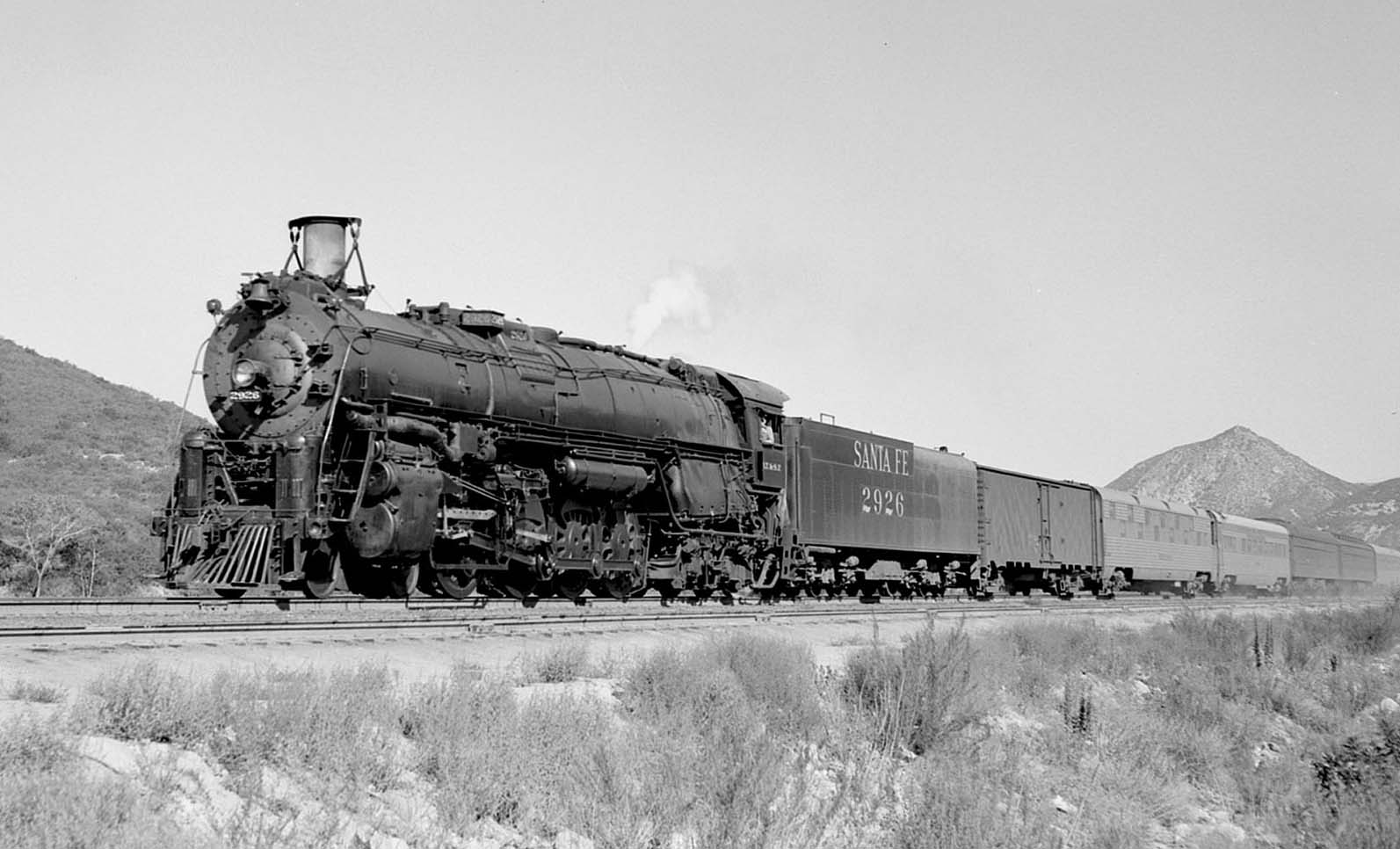Atchison, Topeka & Santa Fe 4-8-4 #2926 is set to make her first moves under power this weekend. Built by Baldwin for the AT&SF, it accumulated over one million miles of usage before its last revenue run on December 24, 1953. Equipped with the latest Timken roller-bearing tandem side-rods between 1946-1948, it was approved for 110-mph speeds with the Santa Fe's crack passenger train. In 1956, it was donated to the City of Albuquerque, New Mexico in recognition of the city's 250th anniversary, and placed in Coronado Park. It was then sold to the New Mexico Steam Locomotive and Railroad Historical Society (NMSL&RHS) on July 26, 1999 and in May 2002 the locomotive was moved by BNSF to its current location near the intersection of 8th Street and Haines Avenue, where it is has spent the last twenty years undergoing restoration to operating condition by the NMSL&RHS. Starting on May 6, 2023, #2926 will visit a nearby brewing company for a fundraiser, a distance of about four blocks.

There is still some work to be done, primarily to tracks. The siding out to the BNSF mainline is pretty spindly and needs overhauling to allow the #2926, which tips the scales at 974,000lbs fully loaded, to regularly enter and exit. The state of New Mexico owns the rail line between Albuquerque and Las Vegas, over which BNSF, Amtrak and the New Mexico Rail Runner operate, and apparently BNSF is open to allowing #2926 to run over that line to Las Vegas. Much of northern New Mexico, along the route of Amtrak’s Southwest Chief, has been granted a temporary PTC wavier because of the lack of traffic on the line. Las Vegas, NM is in this territory and is a perfect destination for #2926 excursions, but if #2926 is used for excursions to Winslow, AZ, for example, it must be equipped with PTC to operate on the BNSF Railway Southern Transcon.
The good news there is that the NMSL&RHS has received a $25,000 grant to install the LeaPTC system, which is what UP uses on #4014, and which is also being fitted to sister engine ATSF #3751, as well as Milwaukee Road #261 and NKP #765. The LeaPTC system utilizes computers and equipment in a trailing diesel that is linked to a terminal in the steam cab. As with the PTC application in diesels, the terminal displays a route map that is continuously updated with speed restrictions, signal indications, work zone locations and other information, while another installation enables the engineer to control accompanying diesels. In an emergency, LeaPTC can activate the train brakes on the steam locomotive. This approach eliminates the need to equip a locomotive with a complete PTC system and antennas, dramatically reducing the cost of complying with the Federal Railroad Administration’s PTC mandate. Interestingly, when it originally ran under ATSF, it was equipped with Automatic Train Stop, which applied the brakes on the train in the event that an engineer went through anything but a green clear signal. PTC is basically a more advanced version of that.
The other thing that I've heard is that Grand Canyon Railway, which is the old ATSF line to the Grand Canyon and the former territory of ATSF Northerns, has a standing agreement with both ATSF #2926 and ATSF #3751, that if either locomotive can make their way there, they are more than welcome to run on their rails.



















































